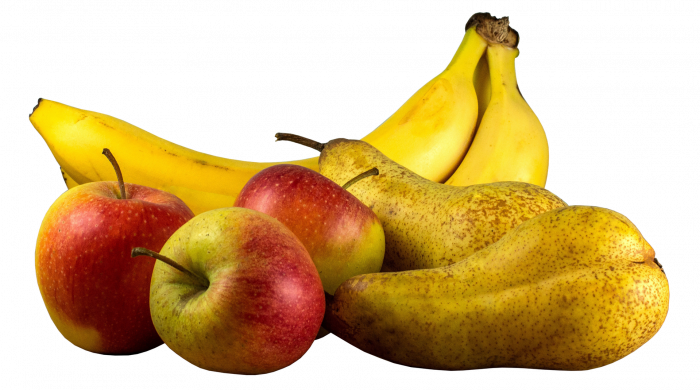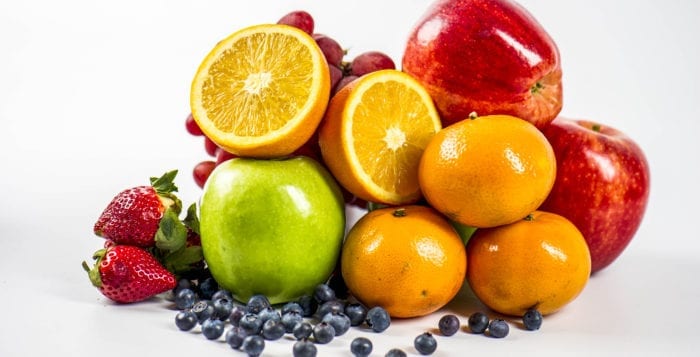By David Dunaief, M.D.

Our understanding of type 2 diabetes management is continually evolving. With this, we need to retire some older guidance. Here, we review a few common myths and the research that debunks them.
Myth: Fruit should be limited or avoided.
Fact: Diabetes patients are often advised to limit fruit in any form — whether whole, juiced, or dried — because it can raise your sugars. This is only partly true.
Yes, fruit juice and dried fruit should be avoided, because they do raise or spike glucose (sugar) levels. This includes dates, raisins, and apple juice, which are often added to “no sugar” foods to sweeten them. The same does not hold true for whole fruit, whether fresh or frozen. Studies have shown that patients with diabetes don’t experience sugar level spikes, whether they limit whole fruits or consume an abundance (1). In a different study, whole fruit was even shown to reduce the risk of type 2 diabetes (2).
In yet another study, researchers considered the impacts of different types of whole fruits on glucose levels. They found that berries reduced glucose levels the most, but even bananas and grapes reduced these levels (3). That’s right, bananas and grapes, two fruits people associate with spiking sugar levels and increasing carbohydrate load, actually lowered these levels. The only fruit tested that seemed to have a mildly negative impact on sugars was cantaloupe.
Whole fruit is not synonymous with sugar. One reason for the beneficial effect is the fruits’ flavonoids, or plant micronutrients, but another is their fiber.
Myth: All carbohydrates raise your sugars.
Fact: Fiber is one type of carbohydrate that has distinct benefits. It is important for reducing risk for an array of diseases and for improving their outcomes. This is also true for type 2 diabetes.
Two very large prospective observational studies, the Nurses’ Health Study (NHS) and NHS II, showed that plant fiber helped reduce the risk of type 2 diabetes (4). Researchers looked at lignans, a type of plant fiber, specifically examining the metabolites enterodiol and enterolactone. They found that patients with type 2 diabetes have substantially lower levels of these metabolites in their urine, compared to the control group without diabetes. There was a direct relationship between the amount of metabolites and the reduction in diabetes risk: the more they consumed and the more metabolites in their urine, the lower the risk. The authors encourage patients to eat more of a plant-based diet to get this benefit.
Foods with lignans include cruciferous vegetables, such as broccoli and cauliflower; an assortment of fruits and whole grains; flaxseed; and sesame seeds (5). The researchers could not determine which plants contributed the greatest benefit; however, they believe antioxidant activity drives this effect.
Myth: You should you avoid soy when you have diabetes.
Fact: In diabetes patients with nephropathy (kidney damage or disease), soy consumption was associated with kidney function improvements (6). There were significant reductions in urinary creatinine levels and proteinuria (protein in the urine), both signs that the kidneys are beginning to function better.
This was a four-year, small, randomized control trial with 41 participants. The control group’s diet comprised 70 percent animal protein and 30 percent vegetable protein, while the treatment group’s diet consisted of 35 percent animal protein, 35 percent textured soy protein and 30 percent vegetable protein.
This is very important, since diabetes patients are 20 to 40 times more likely to develop nephropathy than those without diabetes (7). It appears that soy protein may put substantially less stress on the kidneys than animal protein. However, those who have hypothyroidism and low iodine levels should be cautious about soy consumption; some studies suggest it might interfere with synthetic thyroid medications’ effectiveness (8).
Myth: Bariatric surgery is a good alternative to lifestyle changes.
Fact: Bariatric surgery has grown in prevalence for treating severely obese (BMI>35 kg/m²) and obese (BMI >30 kg/m²) diabetes patients. In a meta-analysis of 16 randomized control trials and observational studies, the procedure led to better results than conventional medicines over a 17-month follow-up period for HbA1C (three-month blood glucose), fasting blood glucose and weight loss (9). During this period, 72 percent of those patients treated with bariatric surgery went into diabetes remission and had significant weight loss.
However, after 10 years without proper management involving lifestyle changes, only 36 percent remained in diabetes remission, and many regained weight. Thus, even with bariatric surgery, altering diet and exercise are critical to maintaining long-term benefits.
We still have a lot to learn with diabetes, but our understanding of how to manage lifestyle modifications, specifically diet, is becoming clearer. Emphasizing a plant-based diet focused on whole fruits, vegetables, beans and legumes can improve your outcomes. If you choose a medical approach, bariatric surgery is a viable option, but you still need to make significant lifestyle changes to sustain its benefits.
References:
(1) Nutr J. 2013 Mar. 5;12:29. (2) Am J Clin Nutr. 2012 Apr.;95:925-933. (3) BMJ online 2013 Aug. 29. (4) Diabetes Care. online 2014 Feb. 18. (5) Br J Nutr. 2005;93:393–402. (6) Diabetes Care. 2008;31:648-654. (7) N Engl J Med. 1993;328:1676–1685. (8) Thyroid. 2006 Mar;16(3):249-58. (9) Obes Surg. 2014;24:437-455.
Dr. David Dunaief is a speaker, author and local lifestyle medicine physician focusing on the integration of medicine, nutrition, fitness and stress management. For further information, visit www.medicalcompassmd.com or consult your personal physician.








